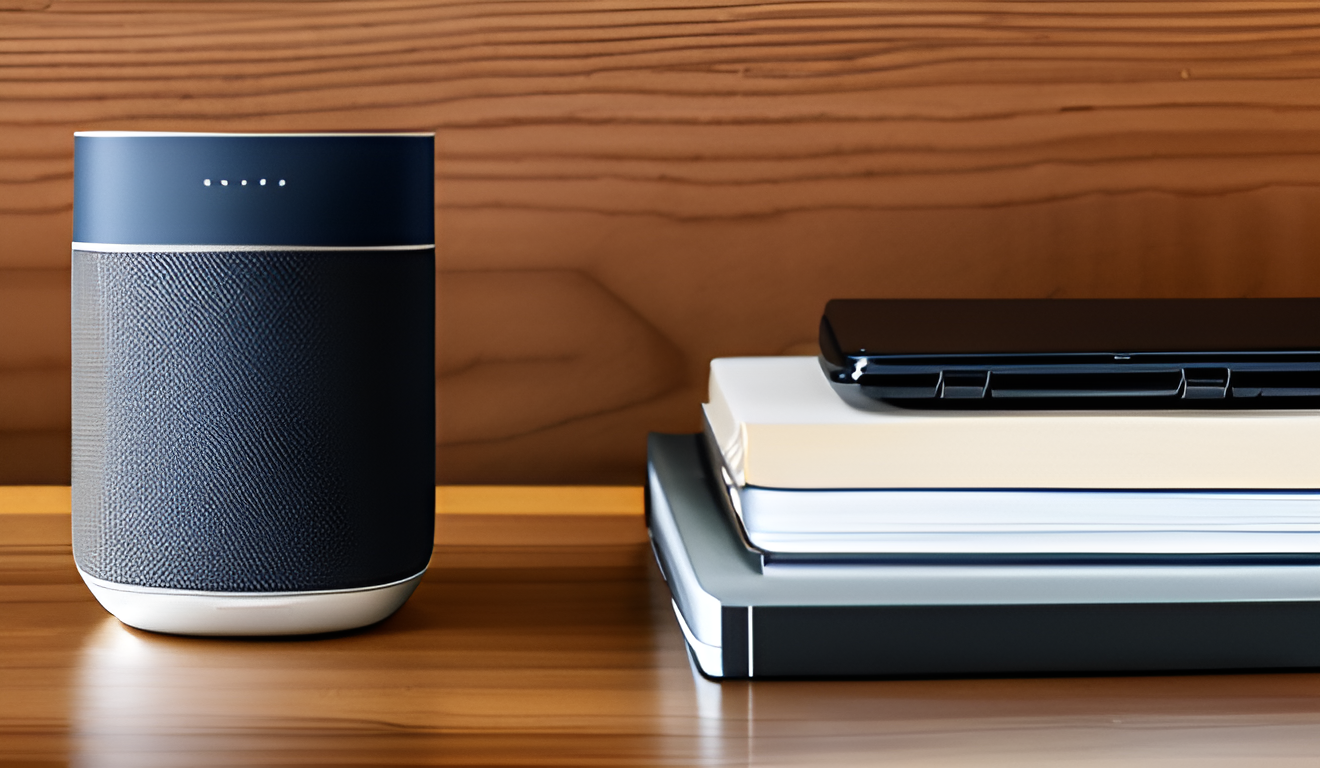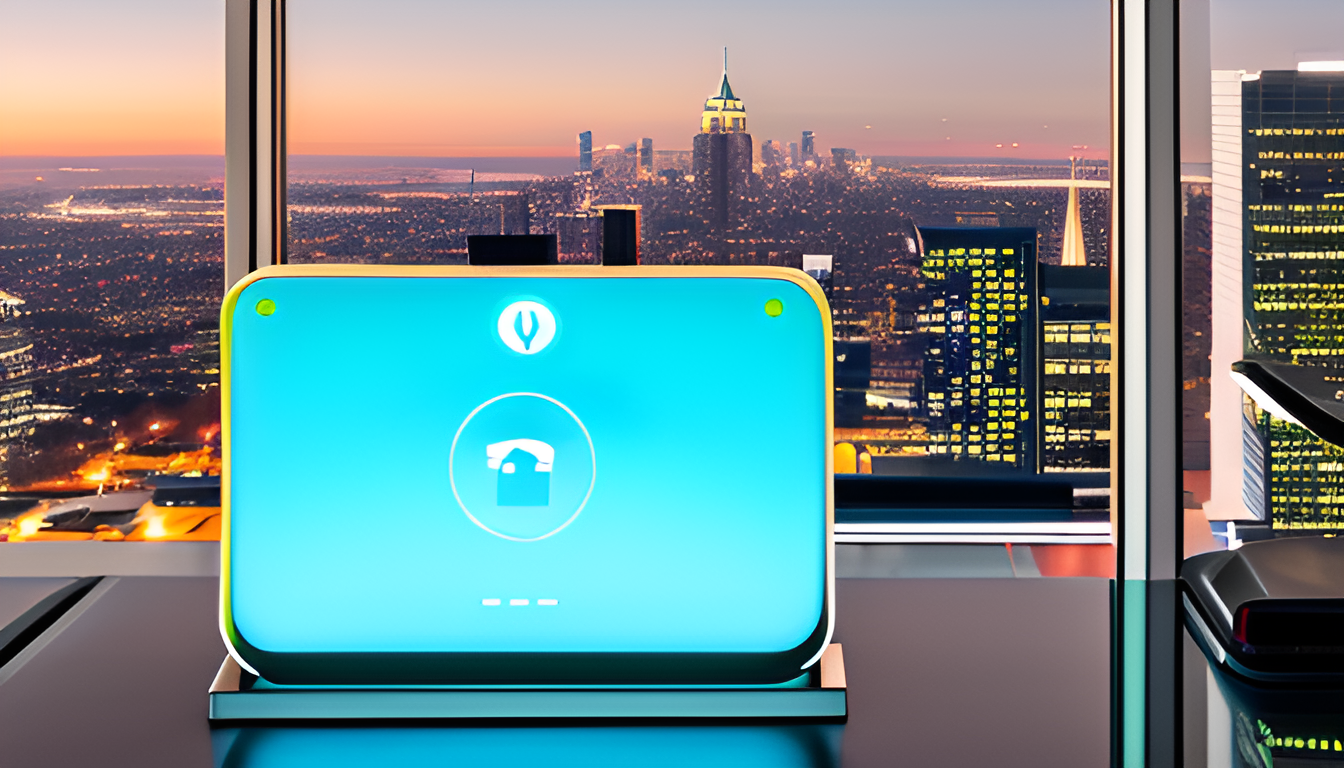How Secure Are AI-Powered Voice Assistants?

In today’s tech-savvy world, AI-powered voice assistants have become household names, revolutionizing the way we interact with our devices. But with great convenience comes great responsibility, and the question on everyone’s mind is: how secure are these digital helpers? While they make our lives easier by performing tasks through simple voice commands, they also open the door to potential security risks that users should be aware of.
Imagine your voice assistant as a friendly but sometimes forgetful assistant. It can remember your preferences, schedule appointments, and even control your smart home devices. However, just like you wouldn’t share your personal secrets with a stranger, it’s crucial to be mindful of what information you share with these assistants. Are they really listening to you all the time? The answer is a bit complicated.
Voice assistants continuously listen for their wake word, but this doesn’t mean they are actively recording your conversations. Still, the data they collect can be vulnerable to unauthorized access and breaches. What happens to your data once it’s collected? Many voice assistants store your interactions in the cloud, which raises significant privacy concerns.
To illustrate the potential risks, consider the following table that outlines common vulnerabilities:
| Vulnerability | Description |
|---|---|
| Unauthorized Access | Hackers may gain access to your voice assistant, leading to data theft. |
| Data Breaches | Personal data stored in the cloud can be exposed during a security breach. |
| Phishing Attacks | Voice assistants can be tricked into divulging sensitive information. |
As we navigate this digital landscape, it’s essential to stay informed and proactive. In the following sections, we’ll explore the vulnerabilities of these devices, the importance of data privacy, and the best practices you can adopt to ensure your voice assistant remains a helpful, secure companion.
Understanding AI-Powered Voice Assistants
AI-powered voice assistants have revolutionized the way we interact with technology, transforming our daily routines into seamless experiences. Imagine waking up in the morning and simply asking your device for the weather forecast, or setting reminders just by speaking. These intelligent companions utilize advanced algorithms and natural language processing to understand and respond to user commands, making technology feel more accessible and intuitive.
At their core, voice assistants like Siri, Alexa, and Google Assistant are built on sophisticated AI models that analyze vast amounts of data to recognize speech patterns and comprehend context. This technology allows them to not only execute simple tasks like playing music or controlling smart home devices but also to engage in more complex conversations. The underlying architecture often involves machine learning techniques, which enable these assistants to learn from user interactions and improve over time.
However, what truly sets AI-powered voice assistants apart is their ability to integrate with a multitude of services and devices. They can connect to your calendar, manage your shopping lists, and even control your home security systems. This interconnectedness offers a level of convenience that was unimaginable just a few years ago. For instance, you can ask your assistant to turn off the lights while you’re already tucked in bed, enhancing both comfort and energy efficiency.
Despite their many advantages, it’s crucial to understand that these devices also come with their own set of challenges, particularly regarding security and privacy. As they collect and process personal data to function effectively, users must be aware of the implications this has for their information. In the following sections, we will delve deeper into the vulnerabilities and privacy concerns associated with these innovative technologies, ensuring that you are well-informed about how to protect yourself while enjoying the benefits of AI-powered voice assistants.
Common Security Vulnerabilities
In our tech-savvy world, AI-powered voice assistants have become almost ubiquitous, but with their rise comes a host of security vulnerabilities that users need to be aware of. These devices, while incredibly convenient, are not without their flaws. One of the most pressing issues is unauthorized access. Hackers can exploit weaknesses in the software to gain control over the device, potentially listening in on sensitive conversations or even manipulating the assistant to perform unwanted actions.
Another significant concern is data breaches. Voice assistants continuously gather information to improve user experience, but this data can become a target for cybercriminals. When these breaches occur, personal information may be exposed, leading to identity theft or fraud. Users should understand that the more data these assistants collect, the greater the risk of it falling into the wrong hands.
Moreover, many voice assistants rely on cloud storage for processing and storing data. This dependency raises questions about data privacy. For instance, how is the data secured once it’s sent to the cloud? Is it encrypted? These are crucial questions that users should consider, as the answers can determine the level of safety provided by their devices.
To illustrate these vulnerabilities further, consider the following table that summarizes common security threats:
| Vulnerability | Description |
|---|---|
| Unauthorized Access | Access by malicious actors to control the device. |
| Data Breaches | Exposure of sensitive user data due to hacking. |
| Cloud Storage Risks | Potential vulnerabilities in cloud-based data storage. |
In addition to these issues, users also face risks from malicious attacks such as phishing and spoofing. Cybercriminals can use these tactics to trick users into revealing personal information or to impersonate the voice assistant itself. As you can see, while voice assistants offer remarkable convenience, they also come with a set of vulnerabilities that require vigilant attention.
Data Privacy Concerns
When it comes to AI-powered voice assistants, data privacy is a hot topic that can’t be ignored. These devices are designed to listen and respond to our commands, but in doing so, they often collect a wealth of sensitive information. Think about it: every time you ask your voice assistant for directions, to play your favorite song, or even to set a reminder, you’re sharing data that could reveal personal habits and preferences. This raises a crucial question: how safe is this information?
Most voice assistants store data in the cloud, which means that your voice commands, queries, and even snippets of conversations may be recorded and analyzed to improve their functionality. However, this practice comes with significant risks. If these data repositories are not adequately protected, they can become attractive targets for hackers. In fact, numerous incidents have shown that data breaches can lead to unauthorized access to personal information, leaving users vulnerable to identity theft and other malicious activities.
Moreover, the implications for user privacy are profound. Many users are often unaware of how much data is being collected and how it is used. For instance, companies may use this data for targeted advertising, which can feel intrusive. To help users navigate these concerns, it’s essential to understand the following:
- How your data is collected and stored
- The potential for data sharing with third parties
- Your rights regarding data access and deletion
To make matters worse, the lack of transparency in data handling practices can leave users feeling powerless. It’s crucial for voice assistant manufacturers to provide clear information about their data policies and to implement robust security measures. Only then can users feel confident that their conversations are private and secure.
Encryption Standards
When it comes to ensuring the security of AI-powered voice assistants, play a pivotal role. These assistants process a wealth of sensitive information, from personal preferences to private conversations, making robust encryption methods essential for safeguarding user data. But what exactly does this entail?
Encryption is akin to locking your valuables in a safe; it transforms your data into a coded format that can only be accessed by those with the right keys. Most voice assistants use advanced encryption protocols, such as AES (Advanced Encryption Standard) and TLS (Transport Layer Security), to protect data both in transit and at rest. Here’s a quick overview of how these standards work:
| Encryption Standard | Purpose | Effectiveness |
|---|---|---|
| AES | Encrypts data to prevent unauthorized access | Highly effective; widely trusted |
| TLS | Secures data during transmission | Essential for safe communication over the internet |
However, it’s not just about the technology itself; the implementation of these encryption methods is equally critical. If the encryption keys are poorly managed or if the software is outdated, even the best encryption can be compromised. This brings us to another point: user awareness. Users must understand the importance of these standards and actively ensure that their devices are configured to use the latest encryption protocols.
In conclusion, while encryption standards are a fundamental aspect of voice assistant security, they are only as strong as their implementation. Users should remain vigilant and proactive about their device settings to ensure that their data remains protected in this increasingly digital world.
User Consent and Control
When it comes to AI-powered voice assistants, user consent is not just a buzzword—it’s a fundamental principle that shapes how these devices interact with our lives. Imagine inviting a guest into your home; you wouldn’t want them rummaging through your belongings without your permission, right? Similarly, voice assistants need to respect your privacy and obtain your explicit consent before accessing sensitive data.
Most voice assistants operate on the premise that they can listen to your commands and gather information to provide personalized experiences. However, this can lead to potential privacy violations if users are not fully aware of what they’re consenting to. Transparency is key here. Users should be informed about what data is being collected, how it will be used, and who it may be shared with. This empowers users to make informed choices about their privacy.
To enhance user control over their data, many voice assistants now offer settings that allow users to manage their privacy preferences. This includes options to:
- Review and delete voice recordings
- Limit data sharing with third parties
- Turn off voice activation features
Moreover, companies are increasingly adopting user-friendly dashboards that provide a clear overview of data collection practices. These dashboards serve as a control center where users can easily navigate their privacy settings. However, it’s essential for users to take the initiative to explore these options actively.
Ultimately, the onus is on both the developers and the users. While developers must ensure that consent mechanisms are clear and straightforward, users must remain vigilant and proactive about their privacy. As technology continues to evolve, so should our understanding of user consent and control. Staying informed is the best defense against potential privacy risks in the digital age.
Malicious Attacks and Exploits
In the digital age, where convenience often trumps caution, AI-powered voice assistants have emerged as both helpful allies and potential vulnerabilities. Their ability to respond to voice commands makes them a prime target for malicious attacks. Imagine a thief standing outside your home, listening to your conversations and waiting for the perfect moment to strike. That’s not far from what can happen when voice assistants are compromised.
One of the most common forms of attack is phishing, where attackers trick users into providing sensitive information under the guise of legitimate requests. For instance, you might receive a voice prompt asking for your bank details, which sounds eerily convincing. Furthermore, spoofing is another exploit that can bypass voice recognition security. In this scenario, an attacker mimics your voice or uses a recording to gain unauthorized access to your personal information or smart home devices.
These threats are not just theoretical; they are very real and increasingly sophisticated. Here are some of the key malicious exploits that users should be aware of:
- Voice Spoofing: Attackers use audio recordings or voice modulation to impersonate legitimate users.
- Data Interception: Sensitive information can be intercepted during transmission, leading to data breaches.
- Unauthorized Commands: Hackers can send commands to smart devices, potentially compromising home security.
As the technology behind these voice assistants evolves, so too do the methods employed by cybercriminals. It’s essential for users to stay informed and vigilant. Just as you wouldn’t leave your front door wide open, you shouldn’t leave your voice assistant unprotected. By understanding these exploits, users can take proactive steps to safeguard their information and enjoy the convenience of voice technology without fear.
Best Practices for Secure Usage
In a world where convenience often trumps caution, using AI-powered voice assistants securely is paramount. These digital helpers can streamline our lives, but they also open doors to potential risks. So, how can we enjoy their benefits while keeping our data safe? Here are some best practices to consider.
First and foremost, regular software updates are essential. Just like you wouldn’t drive a car that hasn’t had maintenance in years, you shouldn’t use a voice assistant without the latest updates. Manufacturers frequently release patches that fix vulnerabilities, so make it a habit to check for updates regularly. This simple step can significantly reduce your risk of falling victim to cyber threats.
Next, let’s talk about voice recognition security. While voice recognition is a fantastic feature, it’s not infallible. To enhance security, consider setting up a secondary authentication method, like a PIN or password, for sensitive tasks. This extra layer can protect you from unauthorized access, especially if someone tries to mimic your voice.
Moreover, be mindful of what you say around your voice assistant. These devices are always listening for their wake word, which means they can inadvertently capture sensitive conversations. Try to limit discussions about personal or financial matters when near your device. It’s like having an open diary in a crowded room—better to keep certain secrets to yourself!
Finally, user consent and control cannot be overlooked. Familiarize yourself with the privacy settings of your voice assistant. Most devices allow you to review and delete voice recordings. Taking control of your data is crucial; after all, you should be the one deciding what information to share. Remember, just because a device can listen doesn’t mean it should.
By adopting these practices, you can enjoy the convenience of AI-powered voice assistants while minimizing risks. Security doesn’t have to be a burden; it can be a seamless part of your tech experience. So, are you ready to make your voice assistant a little more secure?
Regular Software Updates
In the fast-paced world of technology, keeping your voice assistant software updated is not just a good practice—it’s absolutely essential! Imagine driving a car with outdated brakes; it’s a recipe for disaster, right? Similarly, outdated software can leave your voice assistant vulnerable to security threats and exploits. Regular updates are designed to patch vulnerabilities, enhance performance, and introduce new features, all of which contribute to a safer and more efficient user experience.
Most voice assistants come with an automatic update feature, but it’s wise to double-check that it’s enabled. If you find yourself wondering about the last time your device was updated, take a moment to check the settings. Ignoring updates is like ignoring a warning sign on the road; it could lead to serious consequences. To help you understand the importance of these updates, consider the following:
- Vulnerability Patching: Updates often include fixes for known vulnerabilities, making it harder for hackers to exploit your device.
- Performance Improvements: Software updates can enhance the responsiveness and capabilities of your voice assistant, allowing for smoother interactions.
- New Features: Many updates introduce exciting new functionalities that can improve your overall experience, making your assistant even more useful.
Furthermore, manufacturers often provide a changelog with each update, detailing what has been fixed or improved. This transparency not only keeps users informed but also builds trust in the technology. In the long run, embracing regular software updates is a simple yet effective way to bolster the security of your voice assistant and protect your personal data. So, don’t wait—make it a habit to check for updates regularly!
Voice Recognition Security
Voice recognition technology is a double-edged sword; while it offers unparalleled convenience, it also raises significant security concerns. As we increasingly rely on our voice assistants for everything from managing our schedules to controlling smart home devices, the importance of robust cannot be overstated. So, how secure is your voice data? Let’s dive into the intricacies of this technology and understand the measures that can enhance its security.
At its core, voice recognition works by analyzing unique vocal patterns and converting them into digital signals. However, this process is not foolproof. Hackers can exploit weaknesses in the system through various methods, such as spoofing, where they use recorded voice samples to trick the assistant into granting access to sensitive information. Imagine someone impersonating you just by playing a voice recording—it’s a chilling thought!
To combat these vulnerabilities, developers are continuously working on improving the algorithms that power voice recognition. For instance, many systems now incorporate multi-factor authentication, which requires users to verify their identity through additional means, such as a PIN or biometric data. This layered approach not only enhances security but also provides users with greater peace of mind.
Another critical aspect of voice recognition security is the training data used to improve the system’s accuracy. It’s essential to ensure that the data is sourced from diverse voices and accents to minimize biases and enhance recognition capabilities. This also means that voice assistants can better distinguish between legitimate users and potential impostors. The more comprehensive the data, the more secure the system becomes.
In conclusion, while voice recognition technology has made our lives easier, it is crucial to stay informed about its security implications. By adopting best practices, such as using strong authentication methods and being cautious about where and how we use our voice assistants, we can enjoy the convenience of these devices while keeping our information safe. Remember, in the digital age, awareness is your best defense!

Future of Voice Assistant Security
As technology continues to evolve at a breakneck pace, the is an area of intense focus and concern. With the increasing reliance on these digital companions, the potential for security challenges grows. Imagine your voice assistant, once a simple tool for convenience, becoming a gateway for cyber threats. It’s crucial to understand how emerging technologies and regulatory changes will shape the security landscape.
One of the most promising areas for enhancing security is through emerging technologies. Innovations in artificial intelligence (AI) and machine learning are paving the way for more robust security measures. For instance, AI can help develop advanced algorithms that detect unusual patterns in voice commands, potentially identifying malicious attempts to exploit vulnerabilities. This could transform how voice assistants authenticate users, making it significantly harder for unauthorized access to occur.
In addition to technological advancements, regulatory changes are on the horizon. Governments and regulatory bodies are beginning to recognize the importance of protecting user data in an era dominated by digital interactions. Future regulations may require voice assistant manufacturers to implement stricter security protocols, ensuring that user data is not only collected responsibly but also stored securely. This could include mandates for regular security audits and transparency in data handling practices.
To illustrate the potential impact of these changes, consider the following table that outlines the anticipated advancements in voice assistant security:
| Technology/Regulation | Impact on Security |
|---|---|
| AI-Driven Threat Detection | Improved identification of anomalies and potential threats. |
| Stricter Data Protection Laws | Enhanced user privacy and control over personal data. |
| Regular Security Audits | Increased accountability for manufacturers and better protection for users. |
In conclusion, the future of voice assistant security hinges on a combination of technological innovation and regulatory oversight. As users, we must stay informed and proactive in understanding how these changes affect our daily interactions with voice assistants. After all, the more we know, the better we can protect ourselves in this ever-evolving digital world.
Emerging Technologies
As we look towards the future, are set to revolutionize the security landscape of AI-powered voice assistants. Imagine a world where your voice assistant not only understands your commands but also anticipates your needs while keeping your data safe. Sounds futuristic, right? Well, it’s closer than you think!
One of the most promising advancements is the integration of machine learning algorithms that can detect anomalies in user behavior. By analyzing patterns in how you interact with your voice assistant, these algorithms can identify unusual activities that may indicate a security threat. For instance, if your assistant suddenly starts responding to commands it has never processed before, it could trigger an alert, prompting you to investigate further.
Furthermore, the rise of blockchain technology presents another layer of security. With its decentralized nature, blockchain can securely store user data, making it nearly impossible for hackers to access sensitive information. This means that instead of relying solely on centralized servers, which are more vulnerable to attacks, voice assistants could leverage blockchain to enhance data integrity and user privacy.
Additionally, advancements in biometric authentication, such as voice recognition and facial recognition, can significantly bolster security. By employing multi-factor authentication methods, voice assistants can ensure that only authorized users have access to their functionalities. Imagine telling your assistant to play your favorite song, and it verifies your identity through your unique voiceprint before complying!
In summary, the future of voice assistant security is bright, thanks to these emerging technologies. They not only promise to enhance user experience but also to create a safer environment where privacy is respected and protected. As these innovations continue to develop, we can expect a more secure interaction with our digital companions.
Regulatory Changes
The landscape of voice assistant technology is rapidly evolving, and so are the regulatory frameworks that govern their use. With growing concerns about privacy and data security, lawmakers are increasingly recognizing the need for stringent regulations to protect consumers. These changes aim to ensure that companies prioritize user safety while developing innovative voice technologies.
For instance, recent discussions in various governments have focused on implementing data protection laws specifically tailored for AI-powered devices. These laws could mandate companies to be more transparent about how they collect, store, and utilize user data. Imagine a world where every time you interact with your voice assistant, you receive a clear explanation of what data is being gathered and how it might be used. This level of transparency could significantly enhance user trust.
Moreover, regulatory bodies are considering penalties for companies that fail to comply with these new standards. This could mean hefty fines or restrictions on their operations, pushing them to adopt better security measures. The goal is to create a safer environment for users while holding companies accountable for their practices.
Some potential regulatory changes include:
- Mandatory User Consent: Companies may be required to obtain explicit consent from users before collecting any data.
- Regular Audits: Voice assistant companies could face regular audits to ensure compliance with privacy regulations.
- Enhanced User Rights: Users might gain more rights regarding their data, including the ability to delete their information at any time.
As these regulatory changes unfold, it’s crucial for users to stay informed and advocate for their rights. After all, in this age of digital convenience, being proactive about security can make all the difference in safeguarding personal information.
Frequently Asked Questions
- How do AI-powered voice assistants collect data?
AI-powered voice assistants collect data primarily through voice commands. When you speak to them, they process your voice input, which may include personal information, preferences, and usage patterns. This data helps them improve their responses and functionality, but it raises important privacy concerns.
- What are the common security vulnerabilities of voice assistants?
Voice assistants are susceptible to various security vulnerabilities, such as unauthorized access and data breaches. Hackers can exploit these weaknesses to gain access to sensitive information or manipulate the device. It’s crucial for users to be aware of these risks to safeguard their data.
- How can I protect my privacy while using a voice assistant?
To protect your privacy, you can take several steps, such as regularly updating your device’s software, adjusting privacy settings, and being mindful of the information you share. Additionally, consider using strong voice recognition features to enhance security and limit access to your device.
- Are voice assistants safe from malicious attacks?
While voice assistants have security measures in place, they are not entirely immune to malicious attacks like phishing and spoofing. Users should remain vigilant and educate themselves about potential threats to enhance their overall security while using these devices.
- What role does encryption play in voice assistant security?
Encryption is vital for protecting the data collected by voice assistants. It secures the information transmitted between the device and servers, making it difficult for unauthorized parties to access it. Understanding encryption standards can help users feel more secure about their data.













